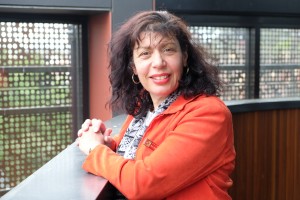Case study: “Inclusive education is an ingrained part of our school culture — a happy and safe place for all”
Posted on
By Mary Demosthenous, Learning Diversity Leader at the School of the Good Shepherd, Gladstone Park.
“My role is working together with staff, families and students with disability to support inclusive practices.
We are a catholic school of 356 students – we make adjustments for approximately 65 students with a disability, 28 of which are students with ASD (an average of 2 students with ASD in each classroom).

Today I would like to share our school story about some of the inclusive practices that support students and families with ASD.
So what happens at the School of the Good Shepherd?
We believe that Inclusive practice
- begins with a school culture that values inclusive education. It is valued and supported by the principal, staff and students. It is an ingrained part of our school culture therefore making adjustments is something that we do as part of our classroom culture – it is about making school a happy and safe place for all.
- benefits all students, not just students with ASD eg; visual timetables benefit the whole class as everyone knows what is happening for the day
- Recognises that every autistic student is different and so we make adjustments according to the student’s individual needs eg: excursions, camps, playground support, lunchtime club
- Is about honest and open communication between home and school to better understand the student, their strengths and challenges and make adjustments accordingly
An example is Chill Out Time (last half hour of the day), which was established from a parent’s concern that as soon as her son arrived home he was having meltdowns.

Mary Demosthenous is embracing inclusion.
Reading through the 10 simple adjustments outlined in the report, I feel very affirmed with the practices that we are implementing in our school. The range of adjustments include:
- Extra time to complete tests
- No/Modified homework and learning tasks
- Use of technology to complete tasks (especially writing stories)
- Mini breaks
- Individual visual timetables – First ______ Then____________
- Visual supports – school rules and consequences
- Use of earphones for classroom work, assemblies
- LSO support – learning tasks, excursions, camps
- PSG meetings with families
- Afternoon tea for Parents with children with ASD
- Chill out time at the end of the day
- Rewards systems
- Transition programs – kinder to Prep, current year level to next year level and Year 6 to Year 7
We constantly ask ourselves “What is driving the behaviour?” and together make appropriate adjustments that will support the student for improved learning and social outcomes.
We are learning with the student what adjustments work best and always strive to make school a happy and safe experience”.
Find out more at: www.onethingforautism.com.au